El Escorial
![]()
Way back in high school, Susan took Spanish and had memories of her teacher telling stories of her summer in Spain. The two places she said we must see were El Escorial outside Madrid and the Alhambra in Granada.
El Escorial is an easy day trip from Madrid so one morning, we again packed up our day packs and headed to Atocha Estacion by bus. From there, we traveled by Cercanias (Regional train), in the general direction of Segovia toward the Guadarama Mountains.
The town of San Lorenzo de El Escorial sits nestled in the foothills with high peaks behind. As we approached, we could see the tower of the basilica above us in the distance. From the railway estacion, we caught a bus into town and found our way to a street of shops where we stopped for cafe con leche. Continuing on, we entered the grounds of El Escorial and tried to appreciate this vast building, once the largest building in Spain, the monastery and palace of Felipe II.
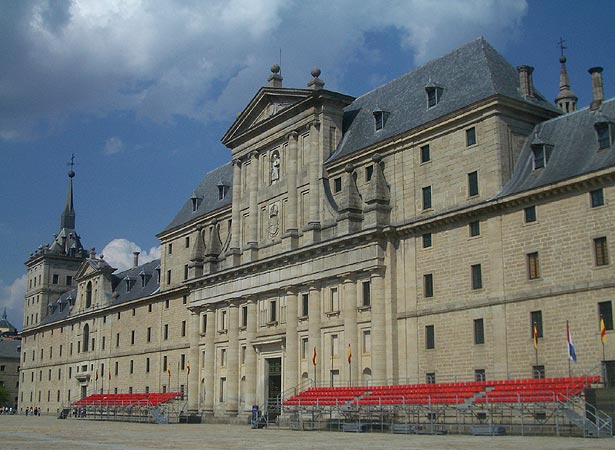
Inside, the visit path was marked so we followed the signs, but quickly learned that we couldn't take photographs so we can't show you more of the inside. In the architecture museum, we learned that Felipe had personally directed the construction and ensured that the best materials were used.
Next we visited the Gallery of Paintings where great works from the royal collection that are not in the Prado are shown. Susan's favorite was El Greco's "The Martyrdom of Saint Maurice", a marvelous work, full of emotion.
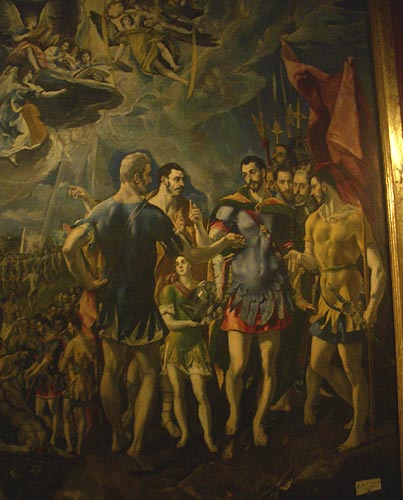
After the paintings, the visit continued through the Royal Palace, where the rooms were spectacularly furnished and hung with tapestries. Our favorite room was the long gallery overlooking the gardens, with maps of the countries of the known 16th century world all along the walls. Further on the apartment where Felipe spent his last days and the bedroom where he could look across into the church where mass was continuously celebrated and where he died, offered a glimpse into his life.
We walked through the Pantheon of Infantes, the burial place of the children of Spanish Royalty, surprised to learn that so many royal children had died. The Royal Pantheon, where all of the Kings of Spain from Charles V on have been buried, is also here but requires a special guided visit. From here we proceeded to the Chapter Rooms where more great art was displayed. We lingered in the Salon de los Batallas, an amazing long hall with walls covered with murals of great battles, painted with such minute detail that military historians use them to study the warfare methods of the age.
In the center of this structure is the Basilica, a soaring exultant high domed Greek Cross structure of massive size and perfect proportion. The dome is supported by four heavy granite piers connected by arches, solid and unpretentious except for their size. Somehow this cathedral felt more welcoming to us than some of the others we have visited.
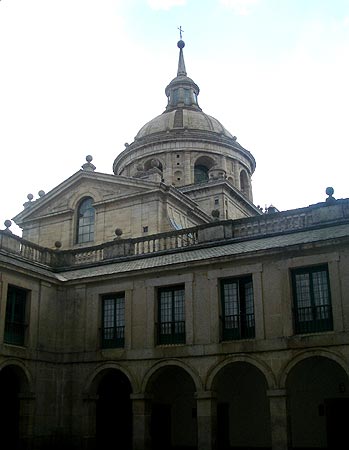
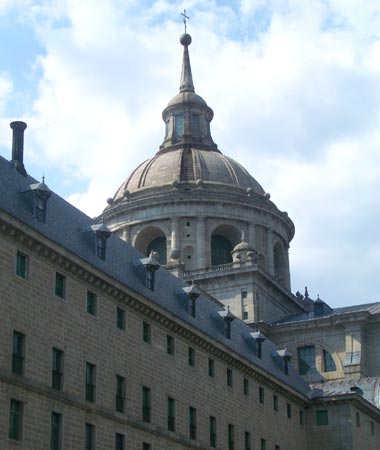
After this visit, we walked outside just a bit overwhelmed! Walking through this magnificent building is as much an emotional experience as it is an intellectual one. We felt as though we had been to the Spain of 1585 and been allowed to glimpse Felipe's life. We learned that he was a grim, humorless, pious man and yet he was a man who enjoyed art and books, studied maps and valued his views of his garden, the great green hills and the rugged mountains of this part of Spain.
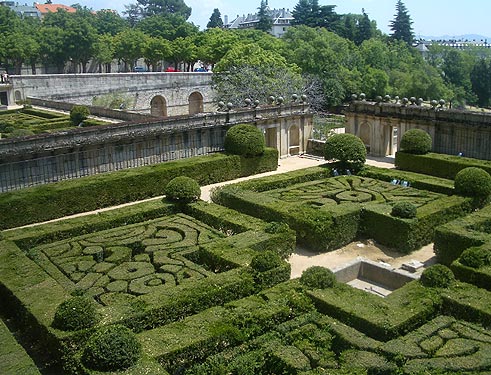
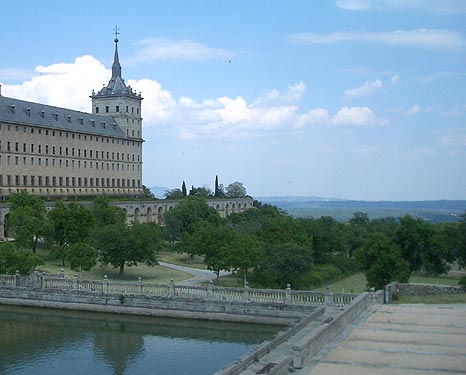
We walked out of the 16th century and back into the town of San Lorenzo, found a cafe for a nice lunch and then explored the nearby streets, found large houses (below left) and a university with wonderful gardens (below right).
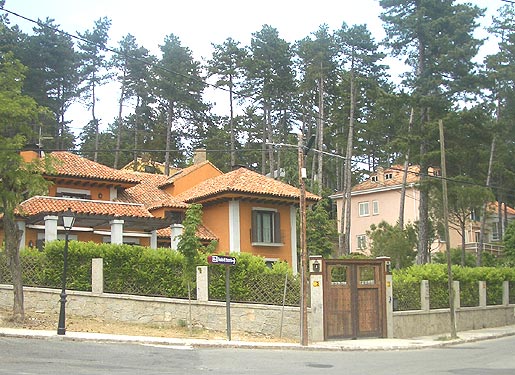
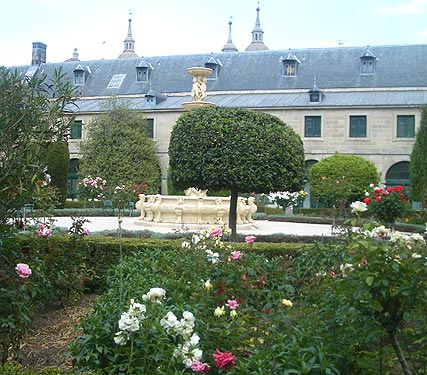
We also found a place for great views of El Escorial and down the valley back toward Madrid. The gardens were open, we discovered, so we walked among the neatly trimmed hedges enclosing rose beds. Late in the afternoon, we walked back to catch the bus to Madrid and home, feeling so very delighted that we had made this trip!
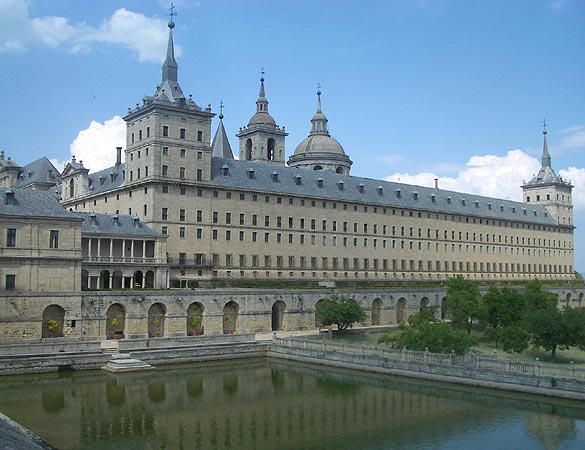
Click here to return to our Travels in Europe - Summer of 2007 page
Click here to return to our Searching the World page
![]()